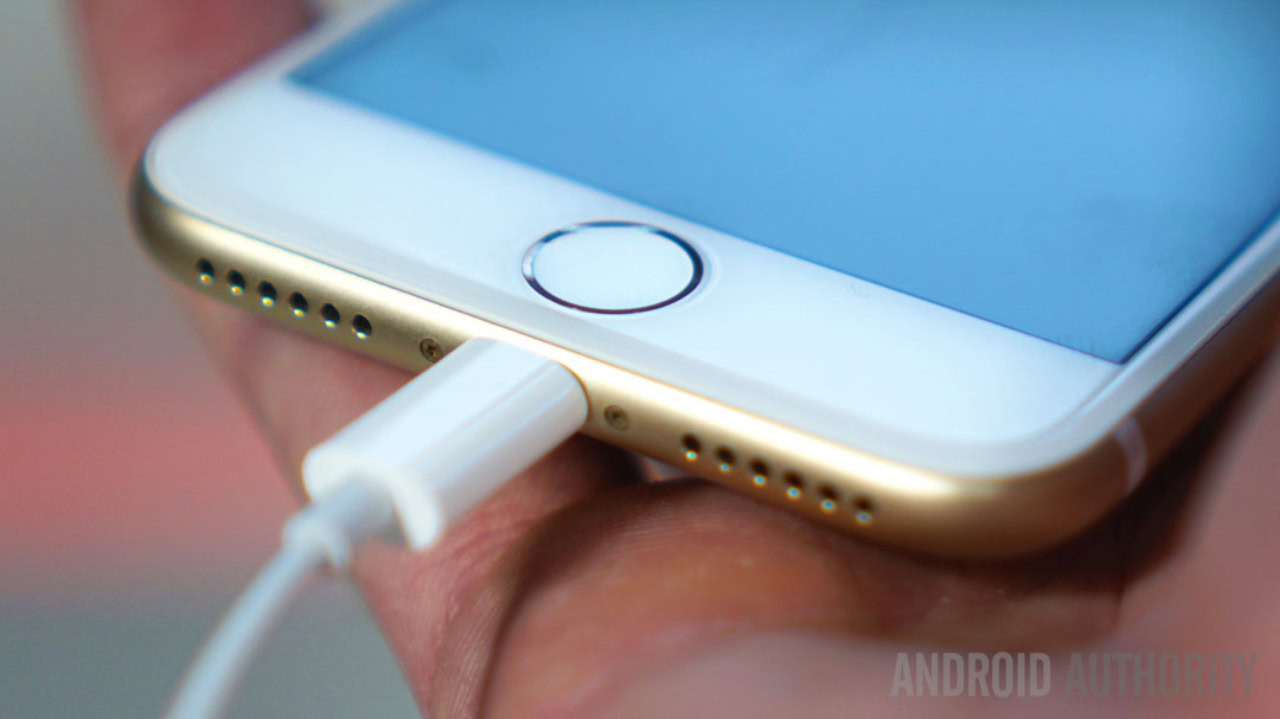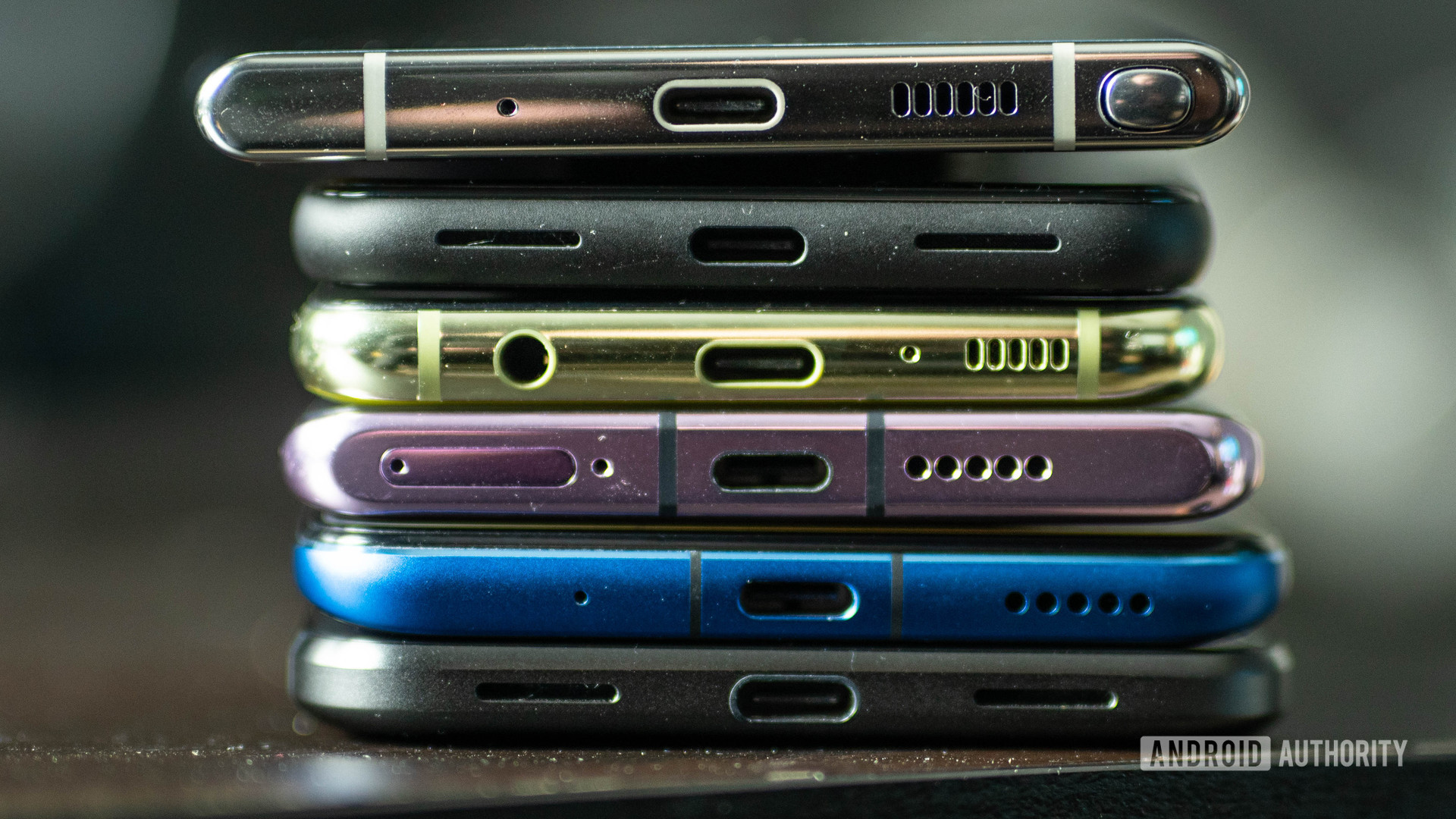Affiliate links on Android Authority may earn us a commission. Learn more.
Hey Apple, now would be a great time to ditch Lightning and get with USB-C
Published onJanuary 22, 2020

Last week, the European Parliament unveiled a proposition to force the world’s tech giants to adopt a single universal charging standard, the most ubiquitous and modern of which is USB-C. The EU would like to see today’s three major charging port types (USB-C, Lightning, and MicroUSB), down from 30 proprietary standards in 2009, reduced to just one.
The reasoning behind the call is primarily about cutting electronic waste, while also simplifying user purchasing decisions. Even though the EU isn’t forcing compliance just yet, the news already has implications for at least one of the world’s largest smartphone manufacturers.
Apple, with its proprietary Lightning connector for the iPhone, seems a primary target of any future legislation. After all, Apple sells tens of millions of iPhones every year, requiring unique cables, plugs, and ports that the company has already dropped from its own PC products. However, it’s more about chargers than cables. Apple already provides a USB-C charger with the iPhone 11 Pro, which could easily be shipped with a wider range of iPhone products to placate the EU’s demands. Even so, why not cut out the middleman and go all-in with a USB-C interface as well?
Just as important, many other manufacturers are also in the firing line. Amazon’s popular Kindle range of e-readers and Fire tablets, for example, still languish behind with microUSB connectors and slow chargers. There also a wide range of accessories and other products, from power-banks to Bluetooth headphones, that are yet to embrace USB-C.
Related: USB cable types explained
Why adopt a single standard?
For consumers, the benefit of a unified charging interface across all devices is pretty self explanatory. One charger type to connect and power all your devices is simply convenient. A major problem with the current state of the mobile industry is knowing which cables and plugs will give you the fastest charging speed with any particular device. It’s currently a bit of a mess, but moving to embrace USB-C and USB Power Delivery would help solve that issue.
In theory, a single charger powers all of your gadgets, from your smartphone to your laptop. Technically, Apple already has such a charger, although it doesn’t ship it with every iPhone model. Likewise, Android handsets are increasingly embracing USB Power Delivery, in addition to their proprietary fast charging methods. Shared technological capabilities across devices can significantly cut down on consumer confusion and expense.
Furthermore, the move to a single charger type is a good move for the environment. EU regulators estimate that obsolete chargers generate more than 51,000 tonnes of waste per year. That’s a small drop in the estimated 50 million tonnes of e-waste produced last year, of which just 20% is recycled. But chargers and cables are an easy area to cut down on waste and seems like a practical starting point.
It's not just Apple, all tech manufacturers should support a unified rather than proprietary fast charging standard.
Burning e-waste to reclaim valuable metals, such as copper in cable wires, releases pollutants into the air. Parts from other gadgets, including charging plugs, also contain lead, barium, mercury, and lithium. These metals are bad for public health, especially if they make their way into local water supplies or crop-growing soil.
Apple already flaunts its eco-conscious efforts, such as using 100% recycled aluminum in its handsets and building devices that use less power. Surely the company, and others, can’t pass up the goodwill on offer for caring a little bit more about the environment.
Apple should join other global players

While it’s possible to support both the Lightning connector and offer a unified USB-C charger, this still leave consumers overburdened with multiple cables and adapters to perform the same function on different devices. Better to get fully on-board with the USB-C interface as well as its charging standard. Claims about making it harder to build thin devices don’t stack up when Android manufacturers are fairing just fine with USB-C. Furthermore, USB-C supports a wide range of data speeds and advanced features, including audio and display plug-and-play, that are increasingly used across the industry.
Read next: Apple in 2020: Can’t stay in the ivory tower forever
Apple’s dedication to the Lightning connector is one of the last remaining major hurdle to ubiquitous USB-C adoption. Although as we mentioned, there’s still probably a little way to go before accessories catch up. However, industry leaders should be pulling the bulk of the industry along. Apple has already adopted USB-C on the iPad Pro, enabling features like the DisplayPort protocol and playing audio over the standard connector. USB-C is standard in the company’s Macbook line too, leaving the iPhone as the last holdout.
Despite its issues, the industry is moving to embrace USB-C and USB Power Delivery as the one stop shop for connectivity and charging. Apple, and other holdouts, should move to quickly embrace the industry standard before being commanded to by legislation. After all, if fans hate the switch, Apple can always blame the infamous EU bureaucracy. There’s no reason to delay.